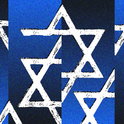Until recently the Awá-Guajá tribe were one of the last indigenous peoples in Brazil to lead a fully nomadic life, surviving through hunting and gathering. There may be about 60 uncontacted Awá-Guajá still at large in a protected area of the rainforest, but most of the other 300 live in three reservations, where they are learning to adapt to village life and practise agriculture—with difficulty.
Brazil has an indigenous population of 460,000. They are the responsibility of FUNAI—the National Indian Foundation— which demarcates and protects their land, most of which is in the Amazon, and supports villages from a series of nearby "posts." These pictures were taken at Juriti post in the northern state of Maranhao, next to a village that is home to 37 Awá-Guajá. Juriti's administrator, Patrilino Viana, helps them grow crops, especially the starchy root vegetable manioc, or cassava. But it's an uphill battle. Many families disappear for days back into the forest, surviving on fruit and hunting monkey, tapir and wild birds with rifles or bows and arrows.
The Awá-Guajá traditionally lived in small communities of up to 30, avoiding stronger tribes and white men, who in the past often killed them. In the 1970s the construction of a railroad devastated their territory. FUNAI tried to gather together the native population and settle them near the posts, but more than two thirds of the Awá-Guajá died, victims of malaria and flu.
The Brazilian government recognises the Awá-Guajá's land, but according to the campaign group Survival International, it is failing to protect its boundaries. And nobody knows what is happening to the uncontacted Awá-Guajá.
For more information visit www.survival-international.org
2. Mereketre, the oldest woman in the village. 





8. A traditional shelter that can be built in under an hour.
Bring me my bow
A few hundred Awá-Guajá people are among the last hunter-gatherers of the Amazon rainforest. But for how much longer?
July 22, 2009












